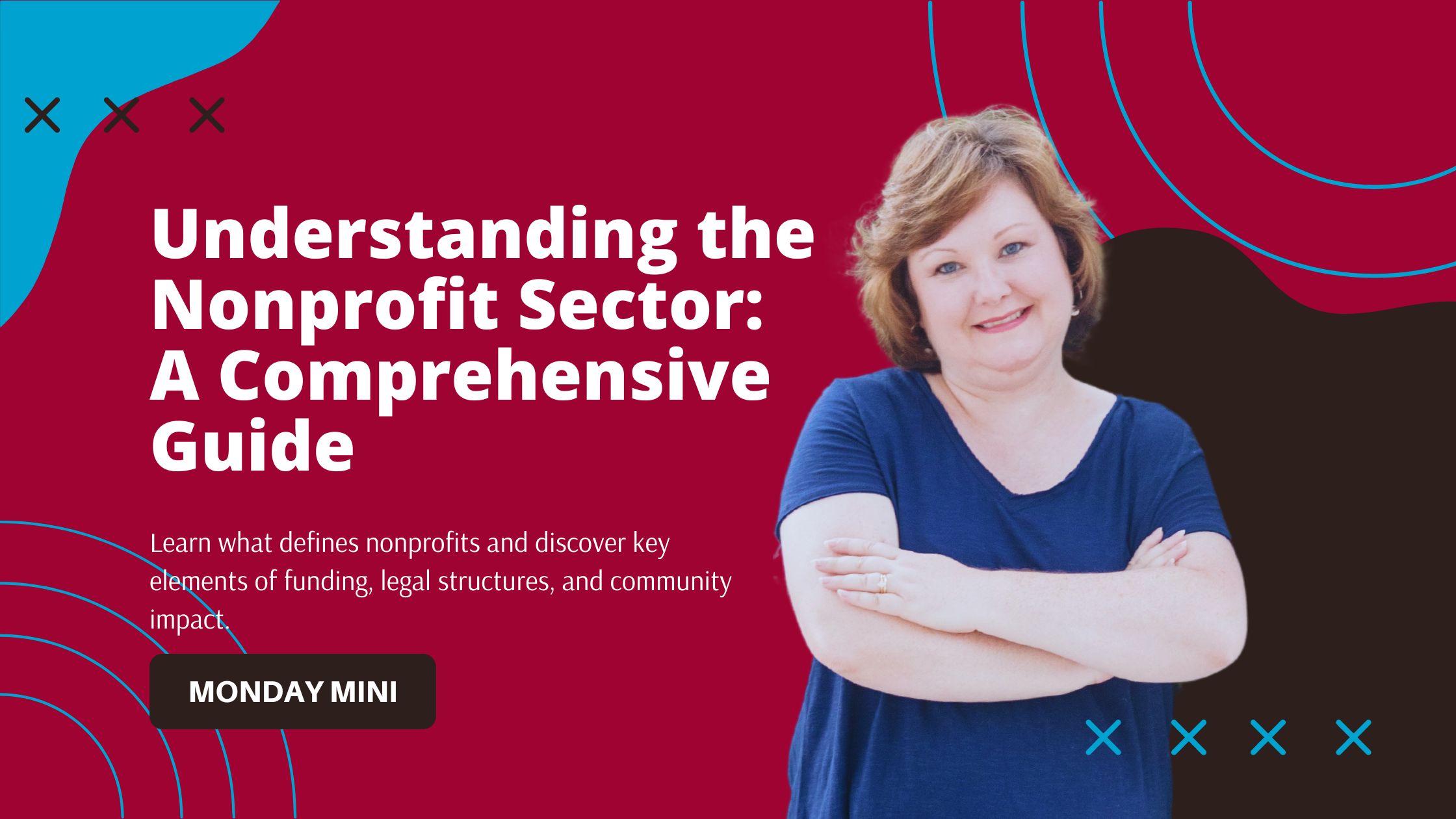Understanding the Nonprofit Sector: A Comprehensive Guide
Welcome to the first installment of our new series, Monday Mini! We’ll provide bite-sized information and helpful how-tos on various topics each week. Today, we’re diving into the fascinating world of the nonprofit sector.
The nonprofit sector is vast and diverse, comprising many organizations driven by a common purpose: to impact society and address various community needs positively. From local grassroots initiatives to global, well-established nonprofits, this sector is crucial in creating social change and driving progress in countless areas.
What Defines a Nonprofit?
At its core, a nonprofit organization is distinguished by its mission to serve the greater good rather than generating profits for individuals or shareholders. Instead of distributing profits to owners, nonprofits reinvest their revenue into pursuing their missions and addressing social issues. This fundamental characteristic sets them apart from for-profit businesses.
Diverse Missions and Causes
One of the remarkable features of the nonprofit sector is its immense diversity. Nonprofits exist to address a broad spectrum of issues, ranging from education and healthcare to environmental conservation, social justice, and more. Each nonprofit organization is driven by a unique mission and set of values, often reflecting its founders’ and supporters’ concerns and passions.
Legal Structures
Nonprofits can take on various legal structures, such as charitable organizations, foundations, and social enterprises. The structure choice depends on factors like the nature of the nonprofit’s work, funding sources, and governance. Understanding the legal structure that aligns with your nonprofit’s goals is a critical step in the early stages of development.
Funding and Sustainability
While nonprofits aren’t designed to generate profits, they require financial resources to operate effectively and fulfill their missions. Funding can come from various sources, including individual donations, grants, sponsorships, and earned income from services or products. Achieving financial sustainability is a significant challenge, and understanding the intricacies of nonprofit funding is crucial to success.
Community Impact
Nonprofit organizations are deeply rooted in their communities, working to address specific local and global needs. They often act as change agents, advocating for social justice, improving access to resources, and supporting marginalized populations. Understanding the unique challenges and dynamics of the communities nonprofits serve is essential for making a meaningful impact.
Volunteers and Supporters
Volunteers and supporters are the lifeblood of nonprofit organizations. These dedicated individuals contribute their time, expertise, and resources to advance the nonprofit’s mission. Building a network of engaged volunteers and supporters is critical to nonprofit sustainability.
Joining the Nonprofit Sector
Whether you’re in the early stages of considering nonprofit formation or seeking to deepen your understanding of the sector, your journey in the nonprofit world is noble and impactful. This sector offers possibilities for those passionate about driving positive change in their communities and beyond.
As you explore the nonprofit sector, remember that every organization’s journey is uniquely shaped by its mission, values, and the communities it serves. Stay curious, be open to learning, and embrace the diversity that makes the nonprofit sector a powerful force for good.
In the upcoming Monday Mini posts, we’ll explore the practical aspects of nonprofit development, helping you take the next steps in your journey. But for now, take a moment to appreciate the nonprofit sector’s incredible potential for positive change.
Action Steps:
- Identify Your Passion: Reflect on the social issues that matter most to you. This will help you align your interests with a nonprofit’s mission.
- Research Nonprofits: Investigate existing nonprofits that align with your values. Understanding their missions and operations can provide insights and inspiration.
- Understand Legal Structures: Learn about different nonprofit legal structures and determine which one best fits your goals and activities.
- Develop a Funding Plan: Explore various funding sources, including grants, donations, and sponsorships. Create a preliminary funding strategy for your nonprofit.
- Engage with the Community: Connect with local community leaders, potential volunteers, and supporters to build a network that can help your nonprofit thrive.
- Volunteer: Gain firsthand experience by volunteering with established nonprofits. This will provide valuable insights into their operations and challenges.
- Educate Yourself: Take advantage of resources, training programs, and mentorship opportunities to deepen your understanding of nonprofit management and development.
- Start Small: Begin with a small project or initiative that aligns with your mission. This can help you build credibility and learn valuable lessons without overwhelming resources.
- Join Nonprofit Networks: Become part of nonprofit networks and associations to access support, resources, and a community of like-minded individuals.
- Stay Informed: Keep up-to-date with trends, policies, and best practices in the nonprofit sector to ensure your organization remains effective and compliant.

